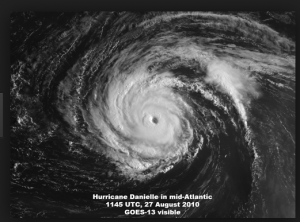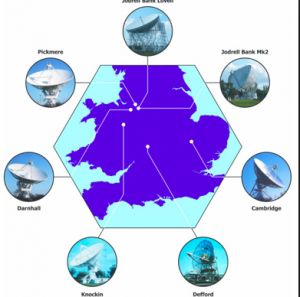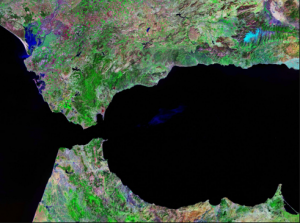Chapter 1.1 Earth Science
Pages: 4-14
Vocabulary:
- astronomy
- meterology/climatology
- geology (physical and historical)
- oceanography
- geosphere
- lithosphere
- asthenosphere
- hydrosphere
- atmosphere
- biosphere
- cryosphere
Objectives:
- Differentiate among the four major branches of Earth Science
- Describe the five systems of Earth and how they interact
- Discuss how Earth science affects your daily life and how you affect the Earth system
Chapter 1.2 Methods of Science
Pages: 19, 924, 928-931
Objectives:
- List the steps of the scientific method
- Be able to recognize and control experimental variables: independent and dependent variables and control and experimental groups.
- Distinguish between a hypothesis, theory, and scientific law
- Distinguish between an observation and an inference
Vocabulary:
- Hypothesis
- Theory
- Law
- Control group
- Experimental group
- Independent variable
- Dependent variable
Describe the four main branches of Earth science and specify how they relate to other sciences.
- Geology
- Oceanography
- Meteorology
- Astronomy
Analyze how the geosphere, hydrosphere, atmosphere, and biosphere interact on Earth
- geosphere
- hydrosphere
- atmosphere
- biosphere
- cryosphere
3. Investigate the use of geologic technology (GPS units, satellites) & how to interpret their results. page 37-41
Chapter 2.3 Remote Sensing
The process of collecting data about Earth from far above the Earth’s surface is called remote sensing.
1. Weather satellite Monitors atmospheric temperature and humidity, ground and surface seawater temperature, cloud cover, and water-ice boundaries. They can scan the surface of the Earth’s surface in one 24 hour period.

2. VLBI Using a large network of antennas around the world, small changes in plate motion can be detected.

3. GPS (Global positioning system) A radio-navigation system that allows users to pinpoint their exact location. This technology combines satellites with computer technology to provide location information in three directions: longitude, latitude, and altitude to determine an exact location.
4. Landsat Satellites receive reflected wavelengths of energy emitted by Earth’s surface. Different features on Earth radiate warmth at different frequencies. Landsats provide data on the Earth’s landmasses, coastal boundaries, and coral reefs. Total coverage of the Earth is achieved every 16 days.

5. Sea Beam (which uses sonar) Located on a ship, rather than a satellite, Sea Beams use sound waves to detect and measure underwater objects.
Objectives:
Illustrate the movement of carbon through Earth’s spheres.
Link to DOE carbon cycle
http://www.netl.doe.gov/research/coal/carbon-storage/Carbon-Storage-FAQs/carbon-cycle
Ch 21.4 Remains of Organisms in the Rock Record
-
The remains and evidence of plants and animals that once lived on Earth are called fossils.
-
Fossils preserved in the rock record provide information about past environmental conditions, evolutionary changes in life forms, and help geologists correlate rock layers from one area to another.
Poster project vocabulary:
- extinct
- fossil
- principle of fossil succession
- theory of evolution
- natural selection
- adaptation
- index fossil
Ch 21
Examine the graph of the Precambrian. http://www.scotese.com/precamb_chart.htm
1. What gas was in greatest abundance at the beginning of the Precambrian?
2. What happens to the abundance of that gas during the Precambrian?
3. Stromatolites are photosynthetic organisms. Through photosynthesis, they consume CO2 and produce oxygen as waste.
4. What do you notice about the appearance of stromatolites and the amount of CO2?
5. What do you notice about the appearance of stromatolites and the amount of oxygen?
6. When did the “Global Ice Age” occur?
The Earth formed 4.56 billion years ago.
During the Precambrian…
- The Earth formed. Gravity pulled dust, ice, and rock together in space. Impact from rocks as wells as radioactive decay produced heat and the melted Earth began to form layers. As Earth cooled, the core, mantle, and crust formed.
- The atmosphere formed. Early atmosphere was similar to gases released in volcanic eruptions (high CO2, water vapor, and nitrogen). Later, life forms converted much of the CO2 into oxygen
- The oceans formed. As planet cooled, water vapor from air cooled and conensed into liquid water
- The continents developed. Convection inside the Earth drove tectonic activity which developed the continents.
- Video: Nat Geo The History of the Earth Parts 1-3
- http://www.youtube.com/watch?v=H6OuD877Rog
- http://www.youtube.com/watch?v=C9Vw0vHdAB4
- http://www.youtube.com/watch?v=zxzLnjoQGDY
- http://www.youtube.com/watch?v=ULEYXB_0D9o
- http://www.youtube.com/watch?v=bk0pr-lgf6A
- http://www.youtube.com/watch?v=hD-JeeK4a9E
- http://www.youtube.com/watch?v=AH4EiaVULwU
- http://www.youtube.com/watch?v=DxER2pGXLn4
- http://www.youtube.com/watch?v=2X2CMsUhL3g
- http://www.youtube.com/watch?v=BqpB3GHtmhI
Layers of the Earth
MIT video 6:26
http://video.mit.edu/watch/layers-of-the-earth-12670/
Interactive web activity
http://www.learner.org/interactives/dynamicearth/structure.html
